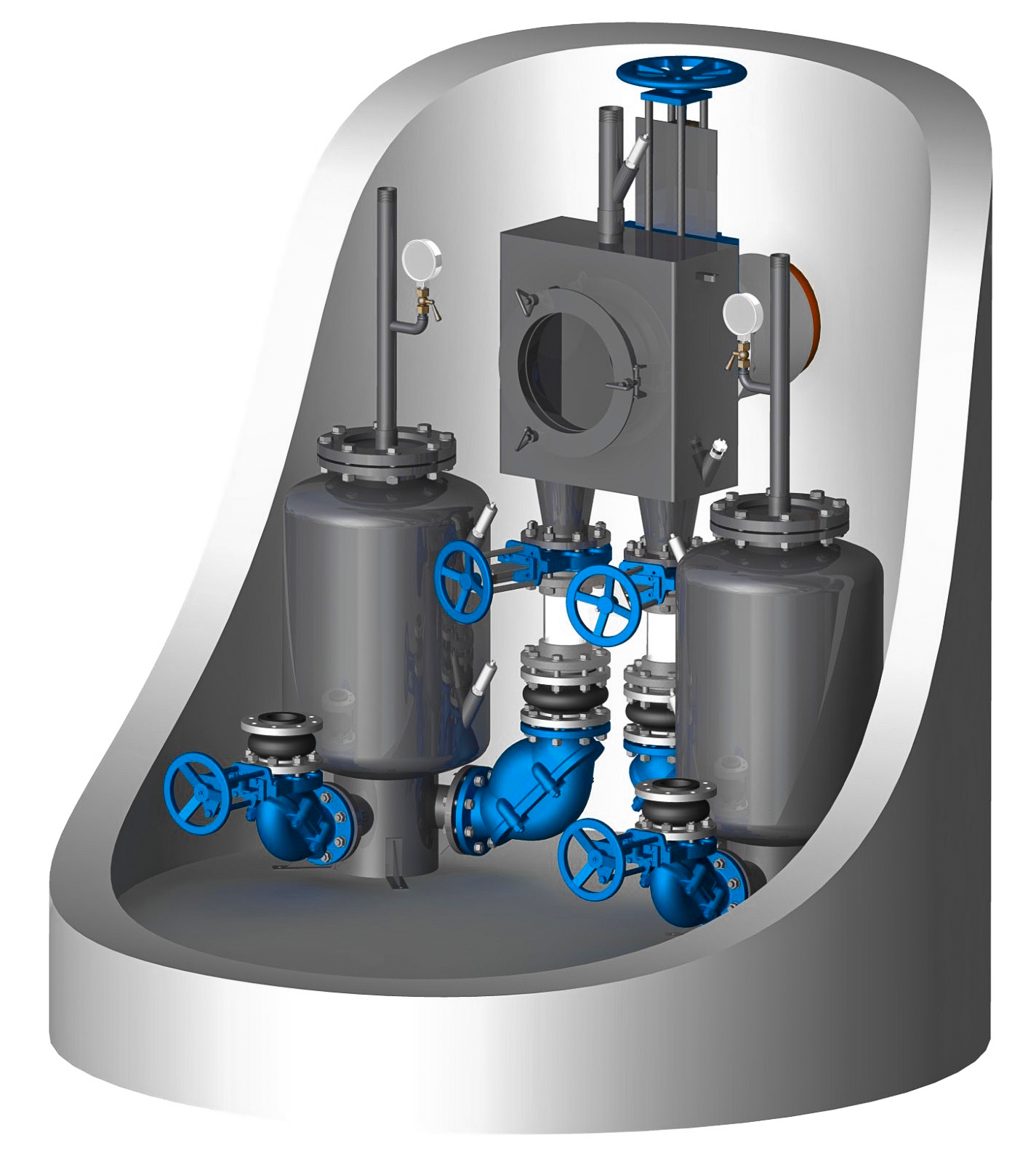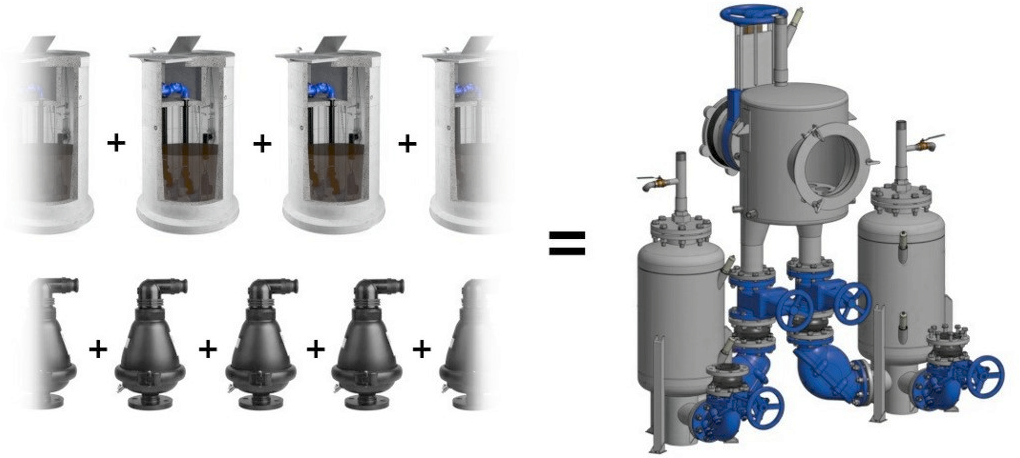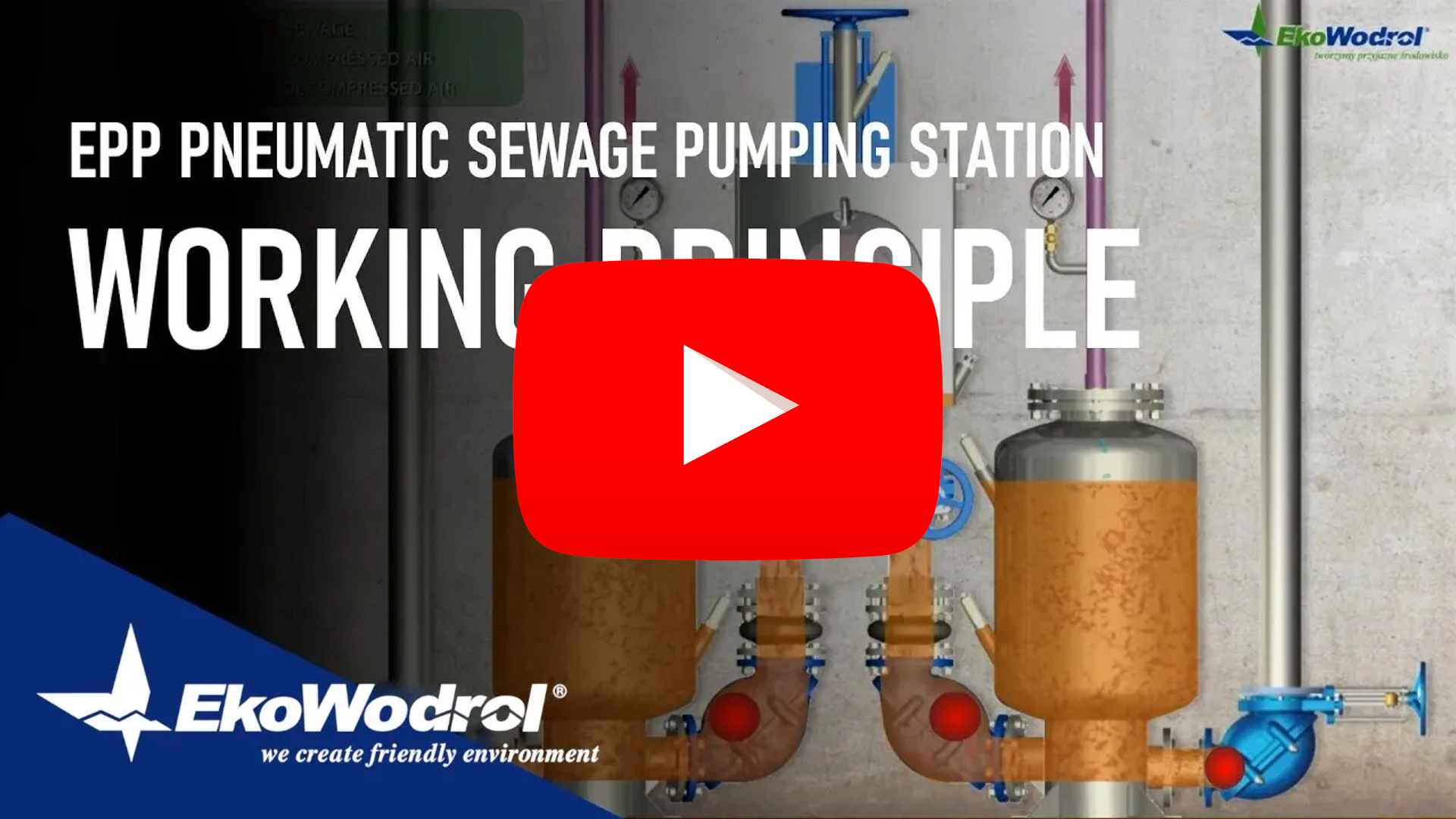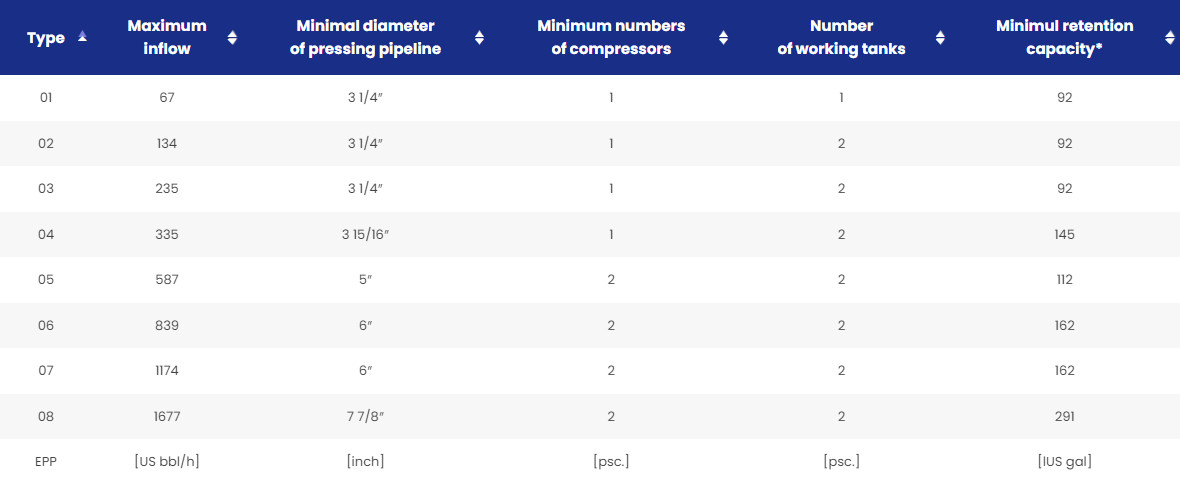Pneumatic Pumping Station EPP
EPP pneumatic lift station is a patented device (US 8,641,386 B2, US 8,347,912 B2) for lifting sewage with compressed air which refreshes the sewage and prevents putrefying during transport
These are complete and fully automated installations, which do not require any constant operation by technicians. They are intended to pump municipal waste in pressure sewage systems, in a wide range of capacities and delivery heads solely with the use of compressed air: a system without any pumps.
In addition, the EPP pneumatic sewage lift station (pneumatic ejector) has been created in order to minimize air consumption (it is equipped with a special system of saving and recovery of air), so that the overall energy efficiency of the whole system is higher than in other lift stations with separation of solids.

Key features

1. GET RID OF COMPLAINTS OF RESIDENTS
EPP refreshes the pumped wastewater, thus preventing it from rotting during transport. It allows the discharge pipeline to be periodically completely cleaned with compressed air, thus reducing the formation of unpleasant odors.
1. GET RID OF COMPLAINTS OF RESIDENTS
EPP refreshes the pumped wastewater, thus preventing it from rotting during transport. It allows the discharge pipeline to be periodically completely cleaned with compressed air, thus reducing the formation of unpleasant odors.


3. REDUCTION OF INVESTMENT COSTS
The use of a pneumatic pumping station allows pumping sewage over long distances and high altitudes, making it possible to build only one device instead of a cascade of several pumping stations. In addition, there is no need to use venting / areating valves on the discharge line, which allows for even greater savings.
3. REDUCTION OF INVESTMENT COSTS
The use of a pneumatic pumping station allows pumping sewage over long distances and high altitudes, making it possible to build only one device instead of a cascade of several pumping stations. In addition, there is no need to use venting / areating valves on the discharge line, which allows for even greater savings.

Working principle
Technical details
The EPP pneumatic sewage pumping station is a complete and fully automated device. It consists of an external technological container and a retention tank connecting the inflow well with the dry chamber of the pumping station. The principle of operation of the EPP sewage pumping station is based on the cyclical, alternating occurrence of two phases: the filling phase and the pumping phase.
✔ Sewage pumping over very large distances and/or heights (pumping pressure to 10 bars).
✔ Good for municipal or industrial sewage as well as a main, zonal or local lift station.
✔ Pumping sewage in sections threaten by putrescibility in the discharge pipe (periodic aeration and/or emptying of the pipeline from the wastewater function).
✔ Free passage from 3″ to 6″.
✔ Patents no.: US 8,641,386 B2, US 8,347,912 B2.
✔ Comply with harmonized norm EN 12050-1,2,4 and the requirements of the Directive: 89/106/EWG.
Construction and description of operation
In the filling phase, sewage flows to the vertical external pipe retention chamber; from there, it flows through the inflow well to the working chambers through open inlet valves. The outlet valve is open so that air could be released from the working chambers, while all the other valves remain closed. Once the working chambers have been filled with sewage, waste continues to accumulate in the inflow well and in the pipe retention chamber. Once the adequate level of sewage has been reached in the pipe retention chamber, the sewage pumping phase is switched on, which continues until the switching off level has been reached.
The pumping phase starts with the outlet valves being closed. The inlet elbow valve is closed under the influence of control air supplied to the working chamber by opening of the control valve. Once the inlet valve is closed, the working air valve is open, through which compressed air is pumped, as a result of which the elbow check valve is open that is located on the outlet from the working chambers, while sewage is forced out with compressed air from the working chamber and is forced into the pressure conduit. Pumping of sewage continues until the time set has elapsed or an adequate level in the working chamber has been reached. Then, the outlet valve is open and air that is inside the working chamber is decompressed in the suppressor, after which the biofilter is located.
After the completion of the compression phase, the system enters the filling phase. These cycles are repeated, and air is alternately forced into the working chambers until the level of sewage in the retention chamber has reached the minimum.
Production and sale of such a product as the EPP pneumatic lift station complements the niche market for the product giving new functional and utility values.
Range of parameters
| Type | Maximum inflow | Minimal diameter of pressing pipeline | Minimum numbers of compressors | Number of working tanks | Minimul retention capacity* |
|---|---|---|---|---|---|
| EPP | [US bbl/h] | [inch] | [psc.] | [psc.] | [US gal] |
| 01 | 67 | 3 1/4″ | 1 | 1 | 92 |
| 02 | 134 | 3 1/4″ | 1 | 2 | 92 |
| 03 | 235 | 3 1/4″ | 1 | 2 | 92 |
| 04 | 335 | 3 15/16″ | 1 | 2 | 145 |
| 05 | 587 | 5″ | 2 | 2 | 112 |
| 06 | 839 | 6″ | 2 | 2 | 162 |
| 07 | 1174 | 6″ | 2 | 2 | 162 |
| 08 | 1677 | 7 7/8″ | 2 | 2 | 291 |
* Minimum retention capacity may be decreased when the inflow is less then maximum or/and the number of compressors will be reduced
Want a free project?
As part of the FREE PROJECT, we will select and design a sewage pumping station, create a concept for BTS Saintary System Defender as well as EKON/EKOS columns.






